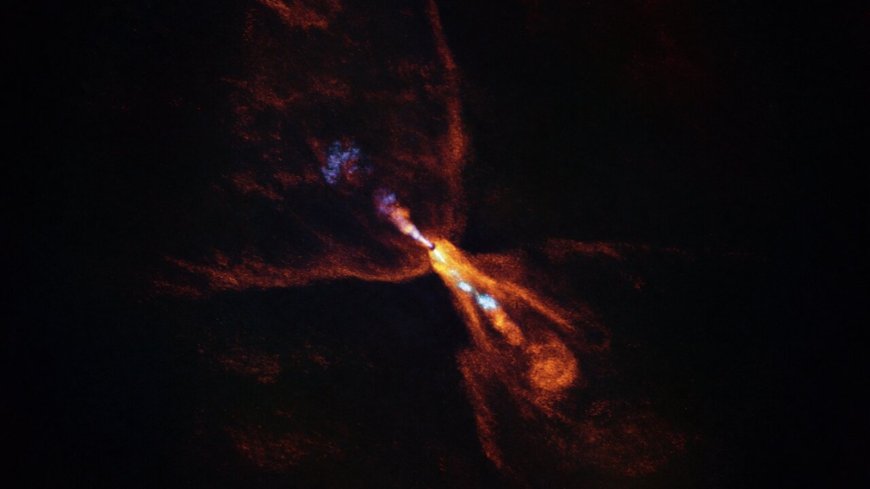Astronomers Witness the Birth of a New Planetary System for the First Time
Astronomers have observed the formation of a planetary system similar to our own solar system. This discovery provides a unique opportunity to study how planets come into existence around stars. The breakthrough was made using data from radio telescopes in Chile and the James Webb Space Telescope.

Astronomers have witnessed the birth of a planetary system that could one day resemble the solar system. The discovery offers scientists a proxy to study how our home planetary system formed around the sun around 4.6 billion years ago.
The team was able to pinpoint the moment specks of material that will one day forge planets began to form around the infant star HOPS-315, located around 1,300 light-years away.
The breakthrough was made possible with data from the Atacama Large Millimeter/ submillimeter Array (ALMA), an array of 66 radio telescopes located in the desert of northern Chile, and observations from the James Webb Space Telescope (JWST).
An illustration shows the condensation hot gas condenses into solid minerals around the baby star HOPS-315, the genesis of planets around this star.
\"For the first time, we have identified the earliest moment when planet formation is initiated around a star other than our sun,\" team leader and Leiden University researcher Melissa McClure said.
The team's results were published on Wednesday (July 16) in the journal Nature.
Stars are born when cool and overdense patches of interstellar gas and dust collapse under their own gravity. This results in a \"protostar\" surrounded by an envelope of the same material from which it formed.
This material is eventually flattened out into a swirling disk with the protostar at its heart. That structure is known as a \"protoplanetary disk,\" as it is from this and within it that new planets will form.
Astronomers have seen many infant stars surrounded by protoplanetary disks, embedded within which are young and massive Jupiter-sized worlds. However, to see the origin of these fresh extrasolar planets or \"exoplanets,\" astronomers needed to catch protoplanetary disks at an earlier stage.
\"We've always known that the first solid parts of planets, or 'planetesimals,' must form further back in time, at earlier stages,\" McClure said.
Meteorites are fragments of asteroids that formed 4.6 billion years ago at the same time that the planets of our solar system were taking shape.
That means that trapped within these space rocks is a fossil record of our planetary system, including the materials that were present at its origin.
Within meteorites is a wealth of crystalline minerals that contain silicon monoxide, which condenses at high temperatures, such as those found in the protoplanetary disk around the sun during the formative period of the solar system.
This team was able to spot traces of hot minerals condensing in the protoplanetary disk swirling around HOPS-315. In particular, they detected silicon monoxide both as a gas around this infant star and in crystalline materials. This suggests that the condensation of minerals has just begun around HOPS-315.
The minerals were first spotted by the JWST, with ALMA pinpointing their location to a small area of the protoplanetary disk. This region has a similar orbital distance to HOPS-315 as the distance between the solar system's main asteroid belt and the sun.
\"We're really seeing these minerals at the same location in this extrasolar system as where we see them in asteroids in the solar system,\" team member and Leiden University researcher Logan Francis said.
That means HOPS-315 is an excellent proxy to study our own cosmic history.
Team member Merel van 't Hoff of Purdue University compared this discovery to \"a picture of the baby solar system.\"
\"We're seeing a system that looks like what our solar system looked like when it was just beginning to form,\" van 't Hoff concluded. \"This system is one of the best that we know to actually probe some of the processes that happened in our solar system.\"
According to the source: Space.
What's Your Reaction?
 Like
0
Like
0
 Dislike
0
Dislike
0
 Love
0
Love
0
 Funny
0
Funny
0
 Angry
0
Angry
0
 Sad
0
Sad
0
 Wow
0
Wow
0


















































































































































































